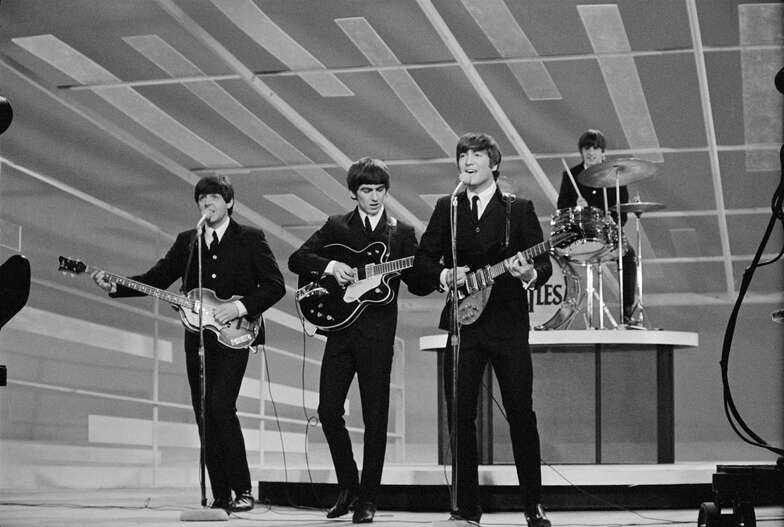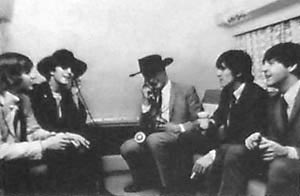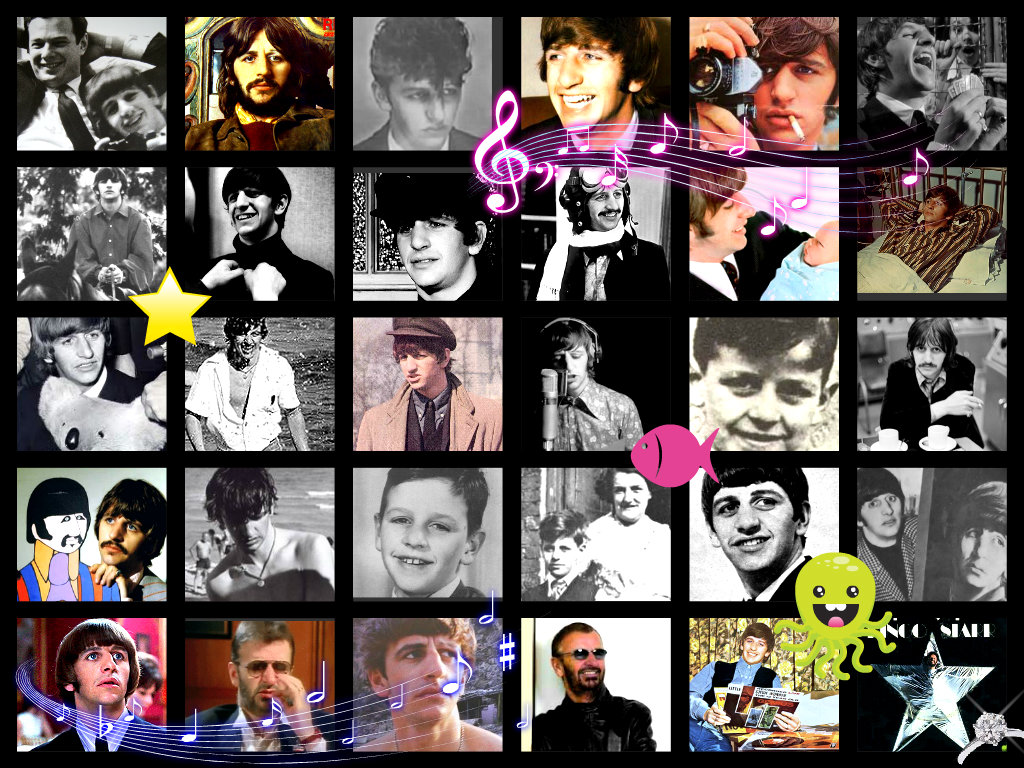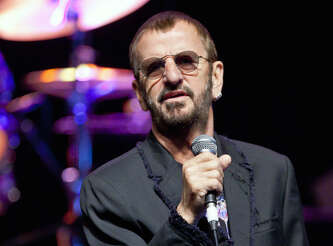McCartney, Ringo almost come together
By Hector Saldana
September 25, 2014
The Beatles never played San Antonio.
Thanks to a shiny new venue, though, the two surviving ex-Beatles are arriving within a week of each other — 50 years after they first arrived in America

The Beatles perform during their first appearance on "The Ed Sullivan Show" in February 1964.
CBS Photo Archive, CBS Via Getty Images
Both Paul McCartney and Ringo Starr have played San Antonio before, both in venues befitting their post-Beatles status.
McCartney christened the Alamodome in May 1993; Starr and his All-Starr Band have played Six Flags Fiesta Texas and Sunken Garden Theater.
McCartney arrives Wednesday. Starr hits town Oct. 7. Both are playing the new Tobin Center for the Performing Arts.
In the Beatles, they were part of what Mick Jagger affectionately and a bit enviously called “the four-headed monster,” equally essential.
After the Beatles, things changed. McCartney stumbled out of the blocks but soon set off on a path that established him as the greatest living rock star and, since 1997, a knight. Ringo scored some huge pop hits and dabbled in acting, but at heart, he's still Billy Shears, getting by with a little help from his friends.
The closest the Fab Four came to S.A. was Dallas on Sept. 18, 1964 — photos show the mop-tops wearing LBJ-style Stetsons at Love Field and later wearing black cowboy hats backstage at Dallas Memorial Auditorium — and at two shows in Houston on August 19, 1965, at Sam Houston Coliseum.

On September 18th 1964, the Beatles found themselves in Dallas, Texas, the city where President Kennedy had been assassinated less than one year before.
Fifty years ago, tickets for the Beatles' Dallas concert ranged from $2.50 to $5.50; in Houston the following year, tickets cost $5.
That's a far cry from the sticker shock price of $250 to $3,500 for McCartney at the Tobin Center. Starr tickets top out at $179.50.
Who knows how Ringo feels about that.
Maybe it stirs up memories of “Saturday Night Live” executive producer Lorne Michaels' April 1976 offer of $3,000 for the Beatles to reunite on his show.
“Divide it up any way you want,” Michaels said in the on-air gag. “If you want to give less to Ringo, that's up to you.”

The case for Paul
John Lennon was the self-proclaimed leader of the Beatles. But it was really Paul McCartney's group to lead.
McCartney's first real executive decision (after introducing George Harrison to Lennon) occurred in pre-fame Hamburg when he took over on electric bass guitar after Stuart Sutcliffe quit. He'd fancied himself a lead guitarist.
The move established the classic format of the band and quickly led to the Beatles' greatest pure rock 'n' roll song, “I Saw Her Standing There,” its bass line borrowed from Chuck Berry's “I'm Talking About You.”
As a songwriting partner and harmonizing singer, McCartney was the perfect foil to Lennon. Less appreciated was McCartney's uncanny ability to match Lennon's voice on the band's earliest songs. The unison singing created a double-tracked effect and joyous power to the vocal style.
As Beatlemania erupted, it fell to McCartney to sing the first two songs - “All My Loving” and “Till There Was You” - for the Beatles' historic appearance on “The Ed Sullivan Show.” Film footage from Beatles' concerts reveal that the doe-eyed bassist always was the one charged with introducing songs and keeping the shows going.
McCartney's ability as a balladeer on “And I Love Her” and “Yesterday” established another dimension. But most important by 1965 was charting a new direction away from the mop-top image with “I've Just Seen a Face” (on the “Help!” album), which set the tone for “Rubber Soul.”
Likewise, his “Eleanor Rigby” and “Yellow Submarine” and the idea to create new alter egos led the group to “Sgt. Pepper's Lonely Hearts Club Band” and “Magical Mystery Tour.”
As the band grew apart, McCartney was the motivator behind albums “The Beatles” (the White Album), “Let It Be” and “Abbey Road.”
In the midst of the turmoil, he delivered “Lady Madonna,” “Hey Jude,” “Back in the U.S.S.R.,” “Mother Nature's Son,” “Blackbird,” “Birthday,” “Helter Skelter,” “Oh, Darling,” “She Came in Through the Bathroom Window,” “Get Back,” “The Long and Winding Road” and “Let It Be.”
In the end, Lennon famously wanted the divorce but McCartney ended the Beatles when he announced it to the world.

The case for Ringo
When the Beatles arrived in America in February 1964, Ringo Starr's distinctive nickname, his rings, prominent nose and cuddly stature quickly made him a fan favorite, the most popular in fact.
There was even a Ringo for President campaign.
Starr (born Richard Starkey) was the oldest of the Beatles and was a hipster star with Rory Storm & the Hurricanes in Hamburg before the fledgling Silver Beatles with John Lennon, Paul McCartney, George Harrison, Stuart Sutcliffe and Pete Best ever arrived in Germany.
Once he joined in 1962, there's no doubt he was the easygoing missing piece to the group. He just looked, and played, perfect atop his drum throne behind his oyster black Ludwig kit.
Starr's penchant for malapropisms, inspired the title for “A Hard Day's Night.” The storylines to both of the group's early films, “A Hard Day's Night” and “Help!,” revolved around Starr, a natural in front of the camera. He later appeared in such films as “Candy,” “The Magic Christian,” “200 Motels” “That'll be the Day” and “Caveman.”
He liked to party (Keith Moon was his best friend) and had an independent streak, too. He was the first to bug out of the Beatles' excursion to India to hang with Maharishi Mahesh Yogi and the first to quit the band in August 1968 during the making of the White Album.
After the Beatles broke up, Starr was the only one of the Fabs to appear at Harrison's all-star Concert for Bangladesh at Madison Square Garden in August 1971. And at the news of Lennon's murder, he and his wife, Barbara Bach, flew to Yoko Ono's side to console and represent.

Many forget that he was the first ex-Beatle to score successive big hits in the early '70s with “It Don't Come Easy,” “Back Off Boogaloo,” “Photograph,” “You're Sixteen,” “Oh My My,” “Only You” and “No No Song.”
Testament to his stature as the Beatles most unifying force was Starr's third solo album, “Ringo,” which featured Lennon, McCartney and Harrison and was the closest thing to a reunion while all were alive.

Former Beatle Ringo Starr will bring his All-Starr Band to the Tobin Center on Oct. 4.
Joel Ryan / Associated Press

No hay comentarios:
Publicar un comentario